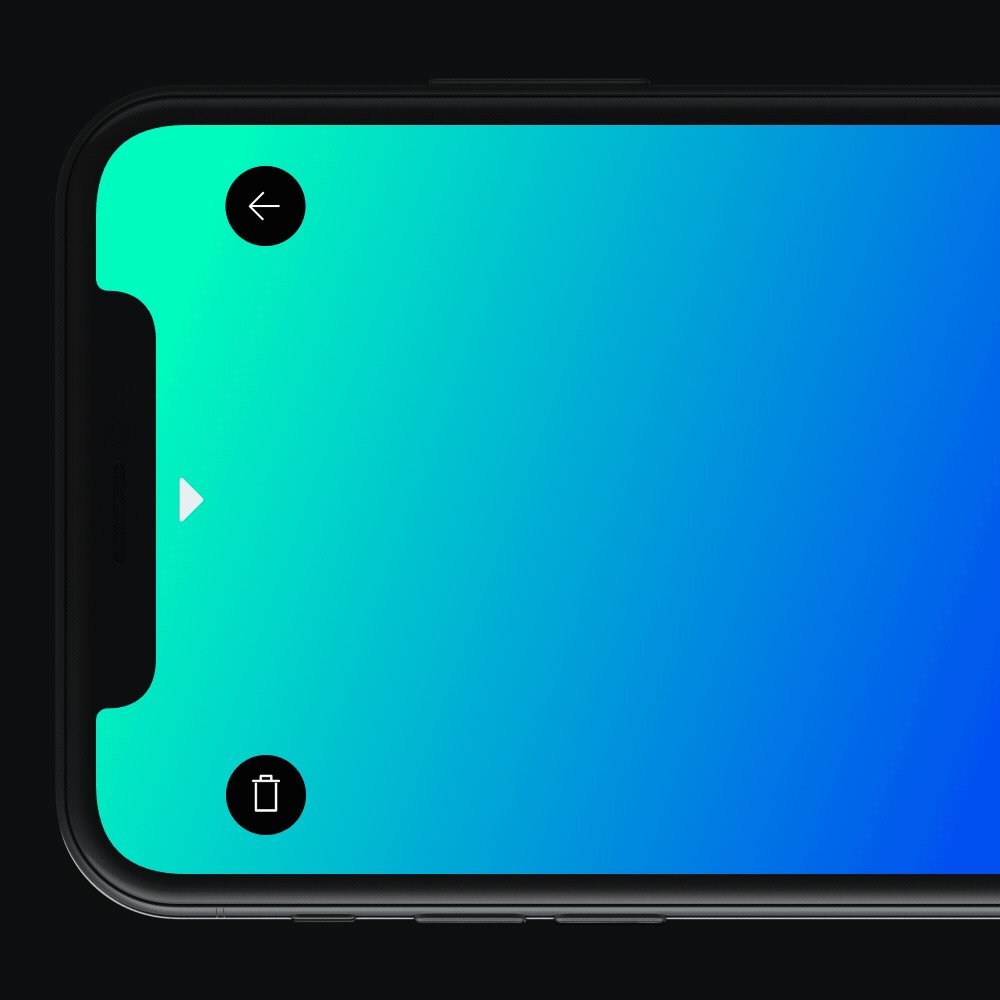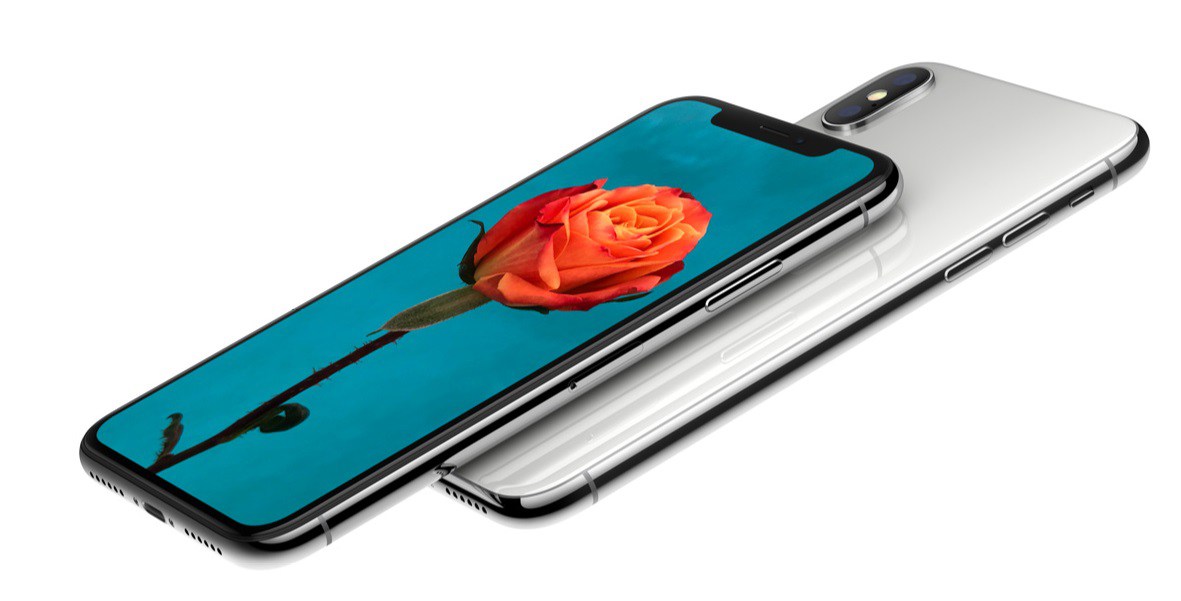
05 Apr Apple Iphone X review – Tech Radar Acticle
OUR EARLY VERDICT
The iPhone X is a sensational-looking iPhone – but it obviously comes at a huge cost, and you’ll have to wait to get it. Question marks remain over Face ID as a way of unlocking the phone, but if your face truly does get ‘learned’ over time, it could work well.
FOR
- Screen is stunning
- New user interface is intuitive
- Portrait Lighting is effective
AGAINST
- Face ID was erratic in demos
- Cost is so, so high
The iPhone X is one of the most exciting phones released this decade – but not because it offers anything particularly innovative or new.
It’s exciting because it’s the most radical redesign of an iPhone yet, tying together a number of key trends in the industry and adding in a level of polish that will attract legions of Apple fans to upgrade, and spend another couple of years in the iCycle.
But this change doesn’t come cheap, and nor will it appeal to those who enjoy a degree of continuity in their upgrades.
This is a new way of interacting with your iPhone, a way that allows you to enjoy more of iOS at any one time, and alters the way you use apps with the increased screen size.
Update: The iPhone X is capable of fast charging – but you’ll need to buy a special cable. We’ve also added in some thoughts about the ‘lip’ and how it affects the use of apps.
iPhone X release date and price
Let’s get the important bit out of the way first: the iPhone X is one of the most expensive flagship phones ever made. It’ll retail at $999 / £999 / AU$1,579 for the basic model.
You don’t need us to tell you that’s a lot of cash for a smartphone – the cost of creating this new all-screen device has meant Apple’s ramped up the price, presumably both to offset the higher development and production costs and to protect its higher margins.
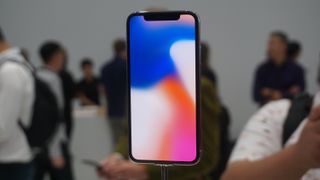
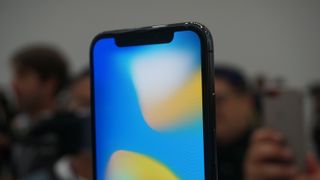
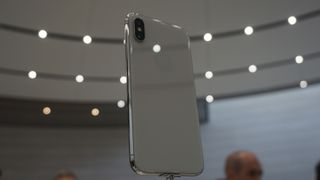
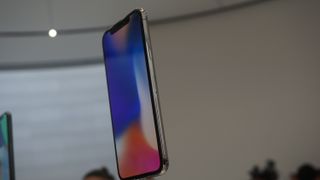
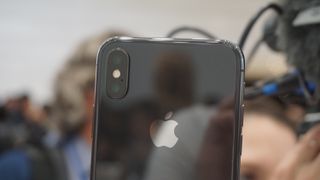
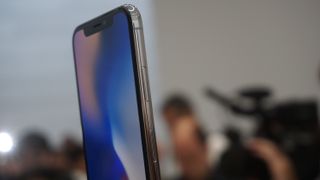
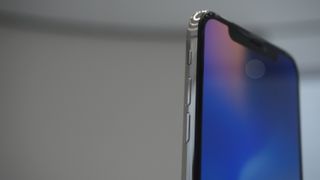
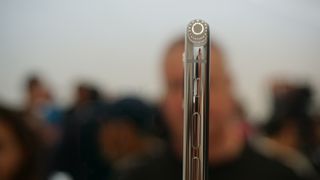
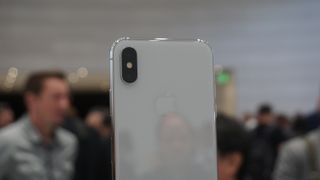
In terms of when you’ll be able to get your hands on it, the iPhone X release date has been set for November 3, with pre-orders going live on October 27.
We’d heard for months of a possible delay to the iPhone X, thanks to the complexity of component manufacture forcing the timescale back – it’s rather surprising to see that it’s happened though, as recent rumors seemed to have taken the schedule change off the table.
That said, even the first release wave looks likely to be rather limited as rumors of stock delays have surfaced once more – if you want an iPhone X, getting one in 2018 is pretty unlikely.
Screen, screen and more screen
Right, let’s get down to the new stuff, and when you pull this phone out on the train you can be sure of one thing: it looks entirely different to anything that’s come before from Apple.
Sat next to last year’s iPhone 7, the iPhone X is a completely different device. The effect of the wider and fuller screen is going to really impress, especially if you’ve not held the Samsung Galaxy S8, which has a similar display.
It’s hard to overstate how beautiful this screen is – and that’s not hyperbole brought on by extreme fatigue. It’s deep, rich and smooth, and draws level with Samsung in the quality stakes easily.
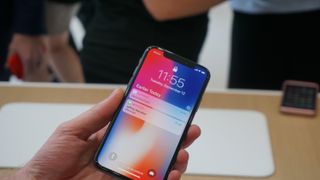
However, what’s different here is that the screen on the iPhone X extends right to the bottom of the device, with the physical home button nowhere in sight.
Apple’s users don’t want to move away from its ecosystem, but if certain specs aren’t met these days then envy can develop when phones are shown off at the bar – so the iPhone X has been upgraded to match its rivals, with a resolution of 2436 x 1125 on the new Super Retina HD display.
The only reason the pixel count needed to be upgraded was that there’s a definite boost to be had with the sharper screens that makes apps look better and web-browsing a more beautiful experience – and with Apple charging as much as it is for this phone, it needed to bring a better screen.
But the move to the OLED display in the iPhone X has definitely brought an upgrade, with the blacks deeper, the colors richer and, well, the overall effect just brilliant.
The Samsung Galaxy Note 8 has been dubbed the best display on the market – and now Apple is using the same technology in its iPhones.
The overall mix of technology is great, and really brings about a special-looking iPhone, rather than Apple rehashing the same tired design again.
Does the iPhone X ‘lip’ get in the way?
The True Depth camera at the top is needed for Face ID, so it makes sense that a small portion would need to be kept for all the technology – but it does ruin the aesthetic somewhat.
But the question is: does this ruin movies or apps? Well – not really. The first demo, The Machines, is augmented reality and needs to make the most use of as much screen as possible to be truly immersive.
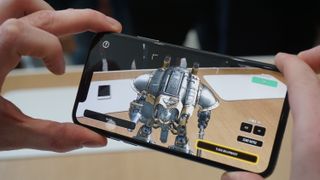
It doesn’t get in the way, as the huge display takes the attention in other ways. Other apps may need to be coded to take advantage of the full screen – so the lip doesn’t disrupt anything – but the apps should scale naturally.
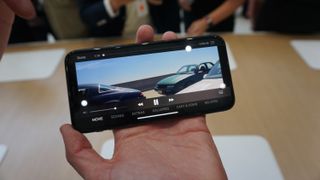
The screen is 18:9 (although that’s not been confirmed by Apple) so a movie that’s in a standard 16:9 format won’t fill the display – we couldn’t see anything that allowed you to extend it to the edges, but in doing so you’d lose some of the action.
This means that – again – the lip doesn’t really get in the way, with the effect of being full screen limited to apps and internet browsing… and for that, the loss of screen real estate isn’t that bad.
In short, yes the lip doesn’t help the aesthetic, but it’s not a massive hindrance. And now designers are using the notch to improve their apps, letting people add a special gesture in there as well.
A better design
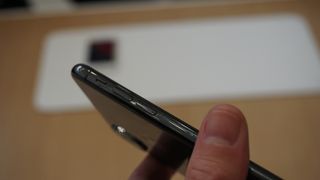
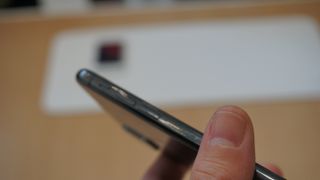
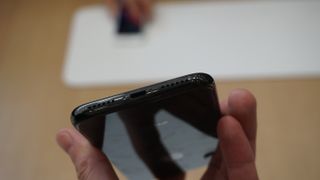
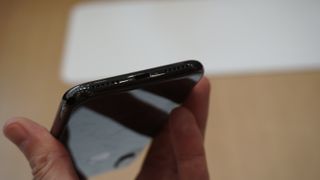
The new iPhone X is easily, easily the best-looking phone Apple’s ever made. We were fans of the industrial design that heralded the arrival of the iPhone 4, and the curved lines of the iPhone 6.
The rear, which is now glass, doesn’t feel as premium as the almost-ceramic metal of previous models, but it still feels solid and secure in the hand. The edges aren’t sharp, instead folding into the palm in a way that’s pleasant to hold.
It’s a very light phone as well – and that glass does love to suck up a fingerprint.
If you’ve used any of the iPhone Plus range, you’ll get on instantly with this handset. It’s got a bigger screen than any other iPhone, and yet it’s smaller than the iPhone 7 Plus.
That doesn’t mean it’s easy to get your fingers across the display to reach all the elements, and there’s almost a feeling that you’re going to keep touching the display with every flick of a digit.
But in practice it sits in the hand just fine, and you’re able to interact with most functions comfortably. There’s definitely a set of gestures for which you have to use two hands, so we’d definitely still categorize this device as a phablet, rather than a ‘standard’ phone like the iPhone 7.
You can’t reach the top right-hand corner as easily, for instance, and we constantly found we had to jiggle the phone around in our hands to make it work properly.
However, the silencer rocker switch and volume buttons on the left-hand side can’t be accessed easily from a single hand (if you’re right-handed) – you can change the volume but not set it to silent.
Face ID
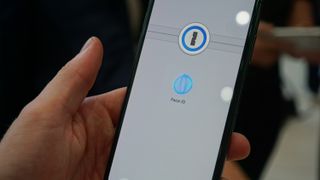
The big change to the iPhone mix this year – for the flagship model anyway – is the loss of Touch ID in order to make way for Face ID, the ability to open your phone just by looking at it.
This is a bold move from Apple, as it’s not a method that we’ve ever been a fan of – we’ve seen that previous handsets relying on similar tech can be duped by a photograph of the user, which isn’t the hardest thing in the world to get hold of.
Apple’s method of taking in loads of different face angles, much like when you have to position your finger around the sensor to set up Touch ID, makes a lot more sense, and Apple is predictably claiming that this is one of the most secure forms of this technology out there.
We weren’t able to try it out in the demo area, but this is certainly something we want to test to see if it’s a worthy replacement for Touch ID.
The demonstration we were shown was a little worrying, though. In the demo on stage the first phone failed (although this was shown later to be a badly set-up phone), and when it was shown to us directly the person demonstrating the phone kept having to to turn the display off and on again to activate the system.
When held at the right distance, it worked well and quickly, but we saw plenty of missed unlocks in our time with the phone. Apparently it’ll learn your face as time goes on, but this is something we really need to test out to make sure it’s easy to get into your phone.
It’s cool that the phone will only turn on when you look at the screen, showing it knows you, but the accuracy needs to be tip top.
A new version of iOS
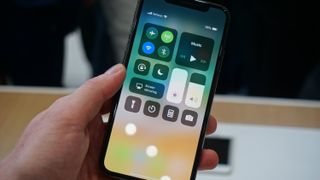
Obviously with the new iPhone X having so much more screen to play with, there were going to have to be some changes to the way iOS works. There’s a new version of iOS 11 that develops a new way to facilitate it.
The ‘main display’ is still the same, with the standard grid of icons. That’s not changed. But the bottom of the phone, where the bezel and home button used to sit, has now been repurposed as the home button; a flick up from the base of the phone – in the same way as the Control Center of old – will get you home.
It’s intuitive and works well, although you do have to get used to balancing the phone in your palm.
The Control Center is now at the top right, and that needs a little more dexterity to hit – you’ll have to use two hands for that generally.
New cameras

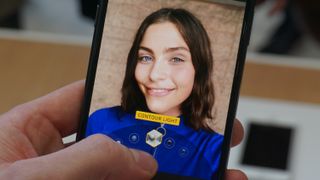


While there are upgrades this time around – a telephoto lens like that introduced on the iPhone 7 Plus is included, as well as optical image stabilization for both sensors so you’ve got a clearer and brighter picture whichever mode you’re in – it’s depth sensing that steals the show.
The camera on the back is bolted on vertically, rather than horizontally, showing that Apple wants you to hold the phone in landscape rather than portrait mode. This is also on account of the front True Depth camera, which takes up so much space and is needed for Face ID.
Augmented reality (AR) wasn’t really shown off at the event, although we did try out some games that were quick and really cool to look at, with the table taking the place of the arena very quickly.
With Apple’s ARKit and Google’s new ARCore, there’s no doubt that the next big contest is going to be in the AR space, with developers having a whole new (real) world to play with as a result – and it’s interesting to see Apple go so early into this space.
The Machines is a game that’s going to need iPhones with AR compatability to play together – AR is fun to use, and this would engender multiplaying fun – but there wasn’t anything amazing in there, other than the immersive screen to show it off.
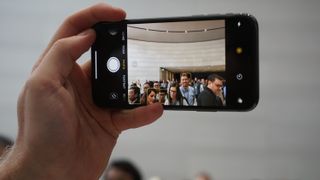
The front-facing camera is excellent at sensing your surroundings and your face, and the ability to map a mask, or transform you into an animated emoji (called Animoji) is genuinely joy-filling.
We can’t explain it, but there’s something amazing about being able to make an on-screen pig frown, or being transformed into a hologram.
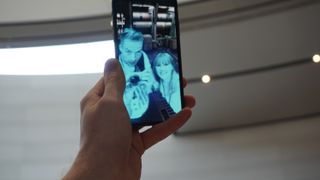
The camera itself felt fine, very similar to previous iterations – in short, this was all about being able to sense the surroundings rather than taking better photos, which was interesting.
However, the machine learning inside should be able to better work out what you’re snapping and alter the settings to match – and the Portrait Lighting, which intelligently learns what is the subject and what isn’t, and can alter the effect of the photo accordingly, is really stunning as a feature.
Wireless charging
Something every iPhone user wants is more battery life. Whether you’re a power user and can’t get through to the end of the working day without reaching for the charger, or you’re a lighter user but would like to not need a top-up every day, there’s more for Apple to do here.
The iPhone X battery size was – as usual – not mentioned on stage during launch, but there are big upgrades coming according to the brand. However, the biggest change is the way you can charge the new iPhone, with wireless charging now added to the mix.
This isn’t a new function – we had it on the Nexus 4 back in 2012, for instance – but lately it’s been Samsung leading the wireless, er, charge by including both forms of charging inside its shell.
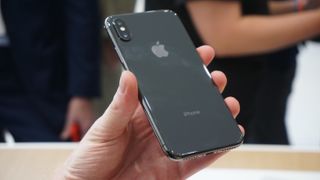
This means the two competing standards, Qi and PMA, are both supported, so consumers don’t have to make a choice.
Apple is supporting only one of them – Qi – but it’s brought out its own charger to allow people to juice up their phone without needing to plug in a cable.
There’s already a wide range of cars and charging mats out there which support the standard Apple is adopting, but it’s a shame that Apple hasn’t copied Samsung and supported both methods.
That said, this will probably see Qi as the dominant standard and Apple has also unleashed a new pad that can charge your iPhone, Airpods (with new case) and Apple Watch all on the same thing… and it’s called AirPower.
- What is Apple AirPower? All you need to know.
The battery life of the iPhone X has been extended, with two hours more power than the iPhone 7 from a single charge – and that should be a real help given all the battery-sapping features on display here.
You can even get a fast charger – 50% within 30 minutes from dead – but only with a USB-C cable.
A USB-C to Lightning Cable retails for $25 (£25 / AU$35) on Apple.com, while a USB-C Power Adapter is available in a few sizes: 29W, 61W and 87W. And if you want it, the price of the cheapest adapter (29W) is $49 (£49 / AU$69) from Apple.
So fast charging is available… but it’s not coming out of the box.
More power
Pumping at the heart of the iPhone X is the new A11 Bionic chipset, designed to handle the heavy lifting the new iPhone is calling on it for.
The new engine is capable of powering the extra pixels that are spread around the front of the iPhone X, as well as handling the huge power the AR sensor is calling for – and on top of that there’s the general improvement in overall performance, and better graphical performance.
This equates to better battery life, thanks to the 10-nanometer manufacturing process Apple is rumored to have employed for its new chipset, allowing it to make things more efficient and thus enabling it to either crank up the power or improve battery life – or balance the two.
The new chip allows for better photo focusing, better face unlocking and all-round power improvements – this is apparently the world’s most powerful phone, which it’ll need to be given the amount of functions it’s got, and the amount of pixels it has to run.
It looks like it’s going to really fly in the tests, after the recent reviews of the iPhone 8 and 8 Plus saw dizzying speeds coming out of the benchmark testing.
Early verdict
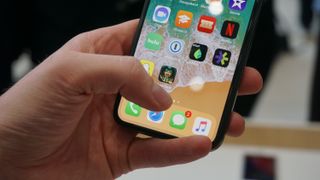
If the planned effect of the iPhone X was to wow with its display, it’s certainly done that. The colors are just so vivid on the all-screen front, and it truly feels like you’re holding one of the iPhone concepts we wrote about years ago.
The AR effects are cool, but they’re not game-changing at this point – we wouldn’t have expected them to be right out of the box, but it’s hard to just say “Oh, we’ll wait to see what happens”.
We’re definitely going to need convincing with Face ID – Apple’s done a good job of explaining why its system is better than anything we’ve seen before, but without trying this day to day it’s hard to know whether it’ll be good enough to replace Touch ID – and the demos weren’t anywhere near convincing enough.
It needs to be thoroughly tested before we can draw proper conclusions – but while we saw it in a demo area, which isn’t perfect conditions, we had hoped it would be flawless out of the box.
But while question marks remain, there’s no doubt that the iPhone X is the futuristic iPhone from Apple that we’ve been waiting for. Just be ready to pay a hefty sum for it.


